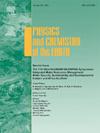Strong mining pressure characteristics and stability control in large height coal face under continuous extraction: A case study
IF 3
3区 地球科学
Q2 GEOSCIENCES, MULTIDISCIPLINARY
引用次数: 0
Abstract
In underground coal mining, the strong dynamic pressure resulting from continuous extraction frequently leads to instability accidents. A case study was conducted at Xiaobaodang No. 1 Coal Mine to address the issues, utilizing numerical simulation, microseismic (MS) monitoring, and site observation methods. The findings indicate that significant mining pressure is observed when the damage zone above the tailgate of the current working face extends through the overlying strata of the pillar towards the neighboring gob during the second mining phase. The damage zones within the overlying rock layers of the two working faces ultimately converge, resulting in significant mining pressure at the site. The safety valve opening rate is generally above 80%, indicating significant mining pressure intensity, particularly in the tailgate. MS events and active roof movement are concentrated in the tailgate and neighboring gob during the second mining phase. The plastic zone radius at No. 112204 tailgate expands from 3 m to 7 m, with MS events primarily occurring 80 m behind to 40 m ahead of the working face, necessitating the need for reinforcement support. Following the implementation of various measures, such as coordinated support using anchors and anchor rods, continuous slotting and floor breaking, along with multi-zone grouting, the integrity of the surrounding rocks is ultimately preserved. Controlling concepts considering geological and mining factors are finally discussed and recommended. The study serves as a significant reference for the prevention and control of intense mining pressure during ongoing extraction processes.

求助全文
约1分钟内获得全文
求助全文
来源期刊

Physics and Chemistry of the Earth
地学-地球科学综合
CiteScore
5.40
自引率
2.70%
发文量
176
审稿时长
31.6 weeks
期刊介绍:
Physics and Chemistry of the Earth is an international interdisciplinary journal for the rapid publication of collections of refereed communications in separate thematic issues, either stemming from scientific meetings, or, especially compiled for the occasion. There is no restriction on the length of articles published in the journal. Physics and Chemistry of the Earth incorporates the separate Parts A, B and C which existed until the end of 2001.
Please note: the Editors are unable to consider submissions that are not invited or linked to a thematic issue. Please do not submit unsolicited papers.
The journal covers the following subject areas:
-Solid Earth and Geodesy:
(geology, geochemistry, tectonophysics, seismology, volcanology, palaeomagnetism and rock magnetism, electromagnetism and potential fields, marine and environmental geosciences as well as geodesy).
-Hydrology, Oceans and Atmosphere:
(hydrology and water resources research, engineering and management, oceanography and oceanic chemistry, shelf, sea, lake and river sciences, meteorology and atmospheric sciences incl. chemistry as well as climatology and glaciology).
-Solar-Terrestrial and Planetary Science:
(solar, heliospheric and solar-planetary sciences, geology, geophysics and atmospheric sciences of planets, satellites and small bodies as well as cosmochemistry and exobiology).
 求助内容:
求助内容: 应助结果提醒方式:
应助结果提醒方式:


